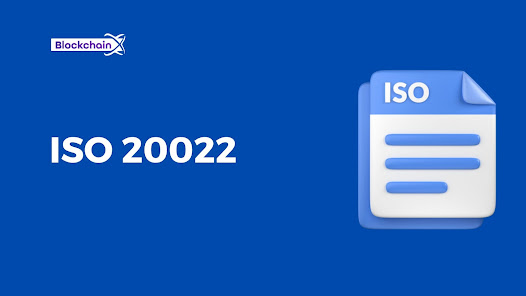ISO 20022: The Future of Financial Messaging Standard
Introduction
In the rapidly evolving landscape of financial transactions, the need for a standardized messaging format has become increasingly crucial. To address this requirement, the International Organization for Standardization (ISO) developed ISO 20022, a global standard for financial messaging. ISO 20022 aims to harmonize communication between financial institutions, enabling seamless integration and enhancing efficiency across the financial ecosystem. This article delves into the key features, benefits, and impact of ISO 20022 on the financial industry.
Understanding ISO 20022
ISO 20022 is a universal messaging standard that facilitates the exchange of structured information between financial institutions and businesses worldwide. It provides a consistent and comprehensive framework for financial communication across various domains, including payments, securities, trade finance, and treasury management. Unlike its predecessors, which relied on proprietary message formats, ISO 20022 offers a unified language that promotes interoperability and simplifies data integration.
Key Features of ISO 20022
Rich Data Structure: ISO 20022 employs an extensible markup language (XML) syntax, allowing for the transmission of detailed and structured data. This feature enables enhanced data analytics, improved transaction monitoring, and supports advanced functionalities such as real-time payments and regulatory compliance.
Message Clarity: The standard utilizes a clear and unambiguous message structure, facilitating better understanding and interpretation of financial messages. This clarity reduces errors, improves straight-through processing (STP), and enhances automation capabilities.
Flexibility and Extensibility: ISO 20022’s flexible design accommodates specific industry requirements and future adaptations. It allows for customization through the addition of user-defined fields, supporting evolving business needs without compromising the standardization benefits.
Benefits of ISO 20022
Enhanced Straight-Through Processing: ISO 20022’s rich data model eliminates the need for manual intervention in transaction processing. This automation streamlines operational workflows, reduces errors, and accelerates transaction speeds, resulting in improved straight-through processing rates and increased operational efficiency.
Improved Data Analytics: With its structured data format, ISO 20022 xrp enables the capture of granular transaction details. This enriched data facilitates advanced analytics, better risk assessment, fraud detection, and the generation of actionable insights for financial institutions.
Increased Interoperability: By adopting a single global standard, ISO 20022 promotes seamless interoperability between different systems and market participants. This interoperability simplifies integration efforts, reduces costs, and fosters collaboration across the financial ecosystem.
Future-Readiness: ISO 20022’s extensible design allows it to adapt to changing market needs, emerging technologies, and evolving regulatory requirements. Financial institutions that adopt ISO 20022 position themselves for future innovations and can readily incorporate new functionalities as they emerge.
Impact of ISO 20022
Payments Modernization: ISO 20022 plays a pivotal role in driving payments modernization initiatives globally. Several countries, such as the European Union, the United States, and Australia, have mandated or are in the process of transitioning their domestic payment systems to ISO 20022. This shift brings enhanced end-to-end payment visibility, improved remittance information, and standardized messaging across borders.
Regulatory Compliance: ISO 20022 supports regulatory requirements by providing a structured framework for reporting and data exchange. Financial institutions can leverage the standard to fulfill obligations related to anti-money laundering (AML), know-your-customer (KYC) processes, and other regulatory mandates efficiently.
Market Integration: ISO 20022 enables better integration between market infrastructures, financial institutions, and fintech providers. This integration fosters collaboration, facilitates innovation, and paves the way for new services and business models, such as real-time payments, open banking, and application programming interfaces (APIs).
Conclusion
ISO 20022 has emerged as the future of financial messaging standard, revolutionizing the way financial institutions communicate and transact. With its rich data model, message clarity, and extensibility, ISO 20022 brings numerous benefits, including enhanced straight-through processing, improved data analytics, increased interoperability, and future-readiness. Its impact is felt across payments modernization, regulatory compliance, and market integration. As the financial industry embraces ISO 20022, it sets the stage for a more efficient, interconnected, and innovative future.



Comments
Post a Comment